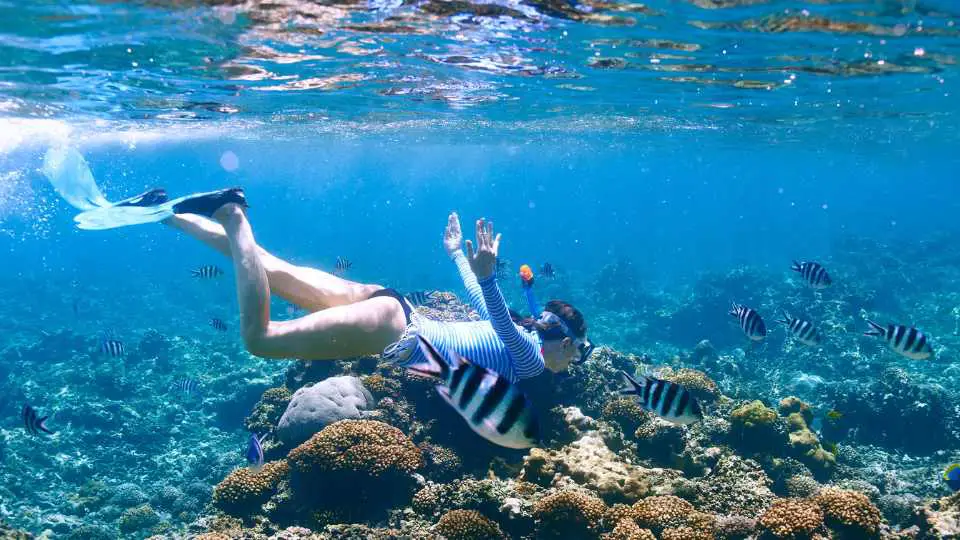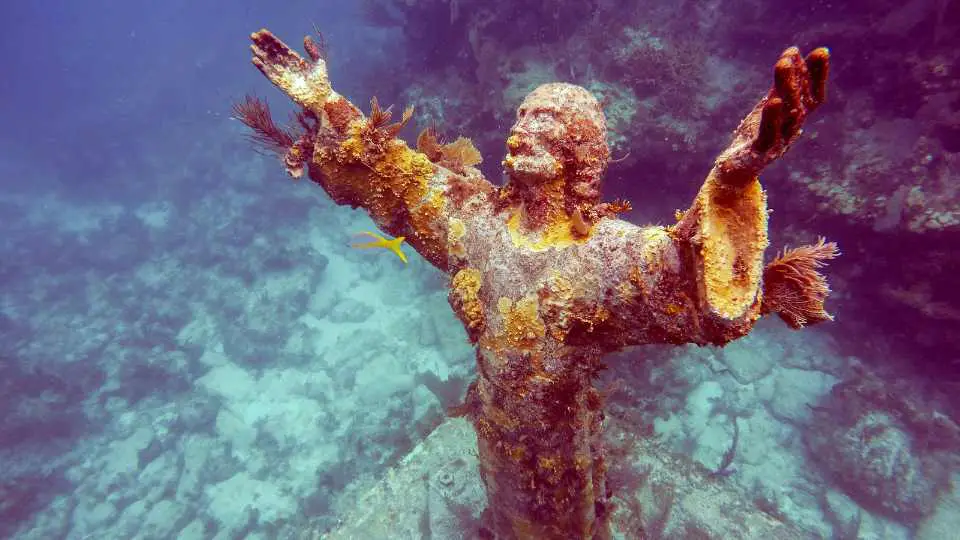Your Guide to John Pennekamp State Park | Key Largo, Florida
John Pennekamp Coral Reef State Park is a unique and breathtaking destination located in Key Largo, Florida. As the first undersea park in the United States, the park encompasses approximately 70 nautical square miles, making it a popular spot for snorkeling, diving and other water activities.
Visitors to John Pennekamp Coral Reef State Park can explore the living, shallow-water coral reefs of the Florida Keys National Marine Sanctuary. The park also features a variety of amenities and experiences including glass-bottom boat tours, kayaking and camping. Additionally, visitors can learn about the park’s history and conservation efforts through educational programs and exhibits.
Whether you’re a nature enthusiast, an adventure seeker, or simply looking for a relaxing getaway, John Pennekamp Coral Reef State Park is a must-visit destination. With its stunning natural beauty and endless opportunities for exploration, it’s no wonder that the park is one of the most popular state parks in Florida.
Frequently Asked Questions – John Pennekamp Coral Reef State Park
What are the hours of John Pennekamp Coral Reef State Park?
John Pennekamp State Park is open 365 days a year from 8:00 AM until sunset. The park’s visitor center is open from 8:00 AM to 5:00 PM and the park’s concession stands have varying hours depending on the season. Visitors are encouraged to check the park’s website for current hours of operation.
Where is the entrance to John Pennekamp Coral Reef State Park?
The physical address of the park is 102601 Overseas Highway in Key Lago Florida (Mile Marker 102.5). The park entrance is on the east side of the Overseas Highway (US Highway 1).
What’s the cost to visit John Pennekamp Coral Reef State Park?
The entrance cost for a visit to John Pennekamp Park is $4.50 for a single occupant vehicle or $8.00 for a multi-occupant vehicle plus $0.50 per person (up to eight people). There is a $2.50 per person charger for each additional person over eight. Pedestrian and bicycles cost $2.50 per person and there is a $10.00 per vessel fee to use the boat ramp.
There are also additional fees for activities such as camping, snorkeling, and scuba diving. For more information on fees, visit the park’s official website or contact the park directly.
Can I camp in John Pennekamp Coral Reef State Park?
John Pennekamp State Park offers several camping options for visitors. The park has 42 campsites with water and electric hookups as well as a group camping area and cabins that are available for rent.
What are the best activities to do at John Pennekamp State Park?
Some of the most popular activities include snorkeling, scuba diving, glass-bottom boat tours, kayaking, paddleboarding and fishing. Water sports equipment and activities can be purchased and / or rented at the dive shop.
Visitors can also enjoy hiking, biking, and wildlife viewing.
What are the fishing regulations at John Pennekamp State Park?
Fishing is allowed at John Pennekamp State Park and visitors must have a valid Florida fishing license. Fishing restrictions include adhering to size and bag limits for various species. Spearfishing and lobstering are only allowed during certain seasons and certain areas of the park are designated as no-fishing zones.
What are the options for kayaking at John Pennekamp State Park?
John Pennekamp State Park offers several options for kayaking. Visitors can rent kayaks and explore the park’s many waterways on their own, or they can join a guided tour led by a park ranger. The park also offers kayak rentals for overnight camping trips to nearby islands.
Can you purchase food & beverages in John Pennekamp Coral Reef State Park?
While it is recommended that visitors bring their own food & beverages, The Blue Heron Cafe’ features a variety of sandwiches, burgers, beverages and ice cream.
Is John Pennekamp Coral Reef State Park pet friendly?
John Pennekamp Coral Reef State Park in Florida is pet-friendly. Pets are only allowed in designated areas such as the campsites, picnic areas and on the trails, but they are not allowed on the beaches or in the water. Additionally, pets must be kept on a leash at all times and owners are responsible for cleaning up after their pets.

About John Pennekamp Coral Reef State Park
John Pennekamp Coral Reef State Park is the first undersea park in the United States. It was established in 1963 and covers approximately 70 nautical square miles of coral reefs, seagrass beds, and mangrove swamps. The park is located in Key Largo, Florida, and is named after John Pennekamp who was an environmental activist and Miami newspaper editor
Plans to designate the reefs off Key Largo for a park started in the 1930s. The state-sanctioned Everglades National Park Commission proposed a national park for the Everglades, including the reefs off Key Largo. However, opposition from property owners, outdoorsmen and Monroe County Commissioners stopped the plan.
In the 1950s, the continental United States’ only living barrier reef was under attack by divers armed to harvest colorful coral and queen conch for curio shops and roadside vendors. As a result, the state created the John Pennekamp Coral Reef State Park to preserve a portion of the only living coral reef in the continental United States.
Today, the park is a popular destination for snorkeling, scuba diving, and other water-related activities. It is also home to a variety of marine life, including more than 600 species of fish, 40 species of coral, and a large population of sea turtles.
The park offers a range of activities and amenities, including boat tours, kayak rentals and a visitor center with exhibits on the park’s history and ecology.

Experiences and Attractions
John Pennekamp State Park offers a wide variety of activities and attractions for visitors to enjoy including snorkeling and diving to wildlife viewing and camping.
Snorkeling and Diving
One of the most popular activities at John Pennekamp State Park is snorkeling and diving. Visitors can explore the park’s beautiful coral reefs and see a wide variety of marine life, including colorful fish, sea turtles, and even the occasional shark. Rental equipment is available and there are plenty of guided tours / classes for those who are new to snorkeling and diving.
Snorkel boat tours are offered four (4) times a day and are about 2.5 hours in length (it takes about an hour round trip to reach the coral reef allowing for approximately 90 minutes of time in the water).
The park features a PADI Five-Star Gold Palm dive shop that offers a variety of scuba courses. There are also a variety of dive tours including a four-hour, two-location dive.

Canoeing and Kayaking
For those who prefer to stay above the water, canoeing and kayaking are great options. Visitors can paddle through the park’s mangrove forests and explore the many channels and waterways that make up the park’s ecosystem. There are plenty of rental options available, and guided tours are also available for those who want to learn more about the park’s wildlife and history.
Camping
For those who want to spend more time in the park, camping is a great option. There are plenty of campsites available, including full hookup sites for RVs. The park also has a variety of amenities, including showers, laundry facilities, and a camp store. Visitors can enjoy the park’s many activities during the day and then relax in the peaceful surroundings of the park at night.
The park has 42 campsites with water and electric hookups, as well as several primitive campsites for those who want a more rustic experience. The park also offers a group camping area and several cabins that are available for rent.
Camping costs $36.00 per night plus tax in addition to a $6.70 non-refundable reservation fee and a $7.00 per night utility fee for RV, cabin, bungalow, boat and yurt units. The utility fee does not apply to tent camping.
Wildlife Viewing
John Pennekamp State Park is home to a wide variety of wildlife, including manatees, dolphins, and a variety of bird species. Visitors can take guided tours or explore the park’s trails on their own to see these animals in their natural habitat. The park also has a visitor center with a 30,000-gallon saltwater aquarium, where visitors can see some of the park’s marine life up close.

Plant and Marine Life
John Pennekamp Coral Reef State Park is situated in the Florida Keys which is a region known for its unique ecosystem. Visitors to the park can expect to see a variety of marine life and plant species, making it a popular destination for nature enthusiasts.
Marine Life
The park is famous for its coral reef, which is the only living coral reef in the continental United States. The reef is home to a wide variety of marine life including over 600 species of fish, sea turtles and various types of crustaceans. Visitors can go snorkeling or scuba diving to see the vibrant colors and diverse marine life up close.
In addition to the coral reef, the park also has seagrass beds, mangrove swamps and other marine habitats. These habitats are home to a variety of species, including dolphins, manatees and various species of sharks.
Plant Species
The park is home to a variety of plant species, both on land and in the water. The mangrove swamps are particularly notable as they are an important part of the ecosystem and provide a habitat for many species. The park also has a variety of seagrass species, which are an important food source for many marine animals.
On land, visitors can see a variety of plant species including gumbo-limbo trees, sea grapes and various types of palms. The park also has a nature trail that winds through the forest, allowing visitors to see a variety of plant species up close.
Overall, John Pennekamp Coral Reef State Park is a unique and diverse ecosystem that is home to a wide variety of flora and fauna. Visitors to the park can expect to see a range of marine life and plant species, making it a must-visit destination for nature enthusiasts.
Travel Tips
When planning a visit to John Pennekamp Coral Reef State Park, there are a few travel tips to keep in mind to ensure an enjoyable experience.
- It is important to note that the park is open from 8:00 am to sunset every day of the year. Visitors should plan their trip accordingly, keeping in mind the time of year and expected weather conditions.
- Visitors should consider bringing their own snorkeling or diving gear, as rentals can be expensive and may not fit properly. Additionally, visitors should ensure that they are comfortable swimming in open water and have the necessary skills and certifications for diving
- Visitors should be aware of the park’s rules and regulations, which include no feeding or touching of marine life, no littering, and no anchoring on coral reefs. These rules are in place to protect the delicate ecosystem of the park and ensure its preservation for future generations.
- Visitors should be prepared for the sun and heat, as the park is located in a tropical climate. Sunscreen, hats, and plenty of water are essential items to bring on any visit to the park.
By keeping these travel tips in mind, visitors can ensure a safe and enjoyable experience at John Pennekamp Coral Reef State Park.

Recommended Hotels near John Pennekamp Coral Reef State Park
There are a number of hotel options near John Pennekamp. Some of our favorites include:






